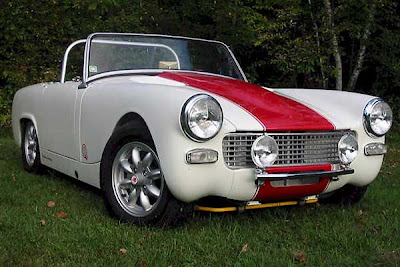Introduced in March 1961, the
Austin Healey 3000 Mk II Cars came with three SU HS4 carburettors and an improved camshaft, designated the
BT7 MkII (4 seat version) and
BN7 MkII (2 Seat version). However, upon the introduction of the
BJ7 (2+2 seats) model in January 1962, the number of carburettors was reduced to two, (SU type HS6) due to the problems experienced with balancing three carburettors. As a result of the introduction of the
BJ7, the
BN7 MkII was discontinued in March 1962, and the
BT7 MkII followed in June 1962. Externally, the main changes introduced with the
BJ7 were a vertical barred front grille, wind up windows rather than side curtains, an improved hood, and a wrap-around windscreen. Optional extras were similar to the
MkI, although the option of a factory hardtop was not available from the BJ7's introduction. From August 1961 a brake servo was also available as an optional extra, which greatly improved braking performance. The
BJ7 was discontinued in October 1963 with the introduction of the
3000 MkIII.

Picture Of
Austin Healey CarsA
3000 MkII BT7 with hardtop and overdrive tested by the British The Motor magazine in 1961 had a top speed of 112.9 mph (181.7 km/h) and could accelerate from 0-60 mph (97 km/h) in 10.9 seconds. A fuel consumption of 23.5 miles per imperial gallon (12.0 L/100 km; 19.6 mpg-US) was recorded. The test car cost £1362 including taxes.

Picture Of
Austin Healey Cars11,564 were made (355
BN7 MkII, 5,096
BT7 MkII, and 6,113
BJ7).
 RSS Feed
RSS Feed Twitter
Twitter







 7:11 PM
7:11 PM
 MINI Cooper Cars Blog
MINI Cooper Cars Blog

































.JPG)























